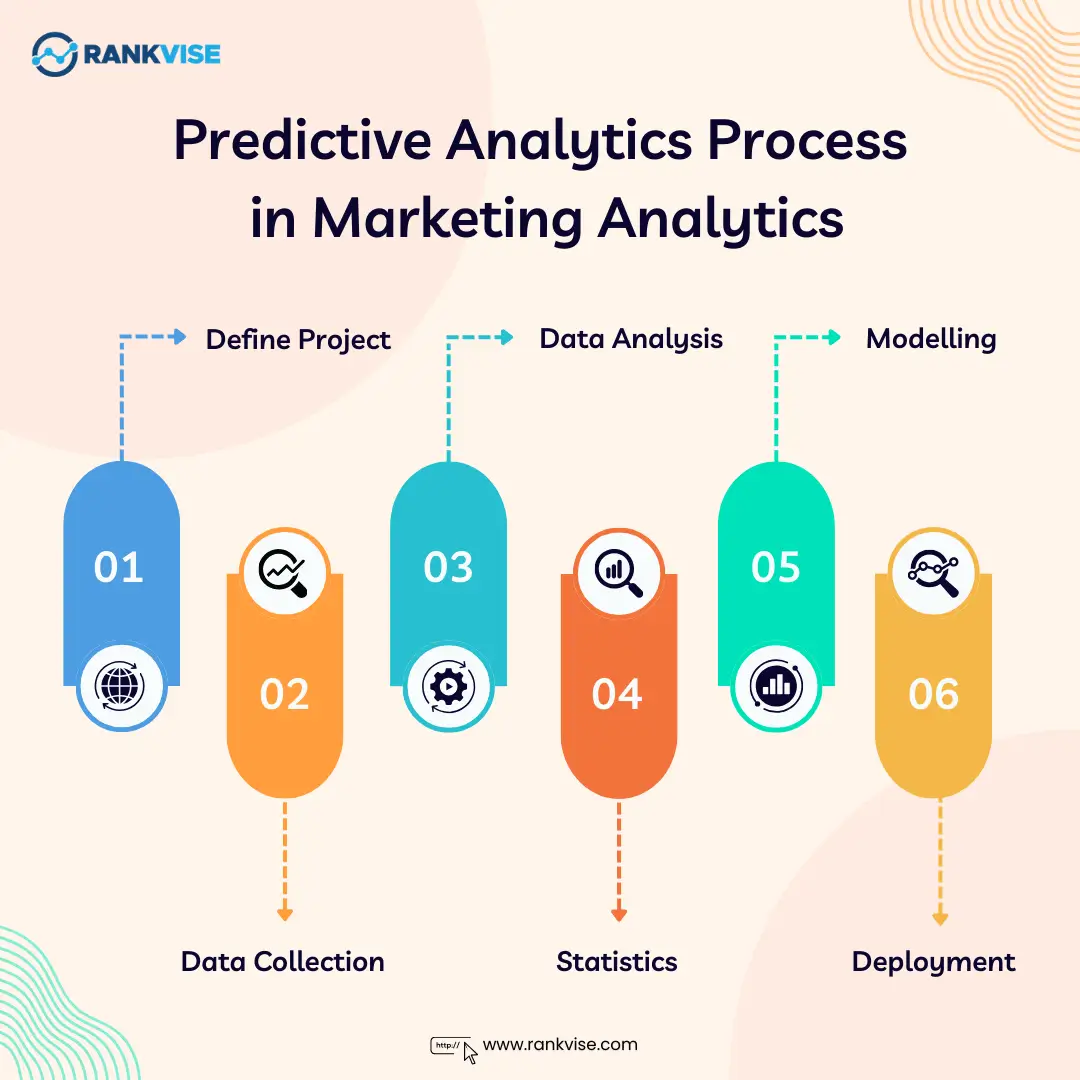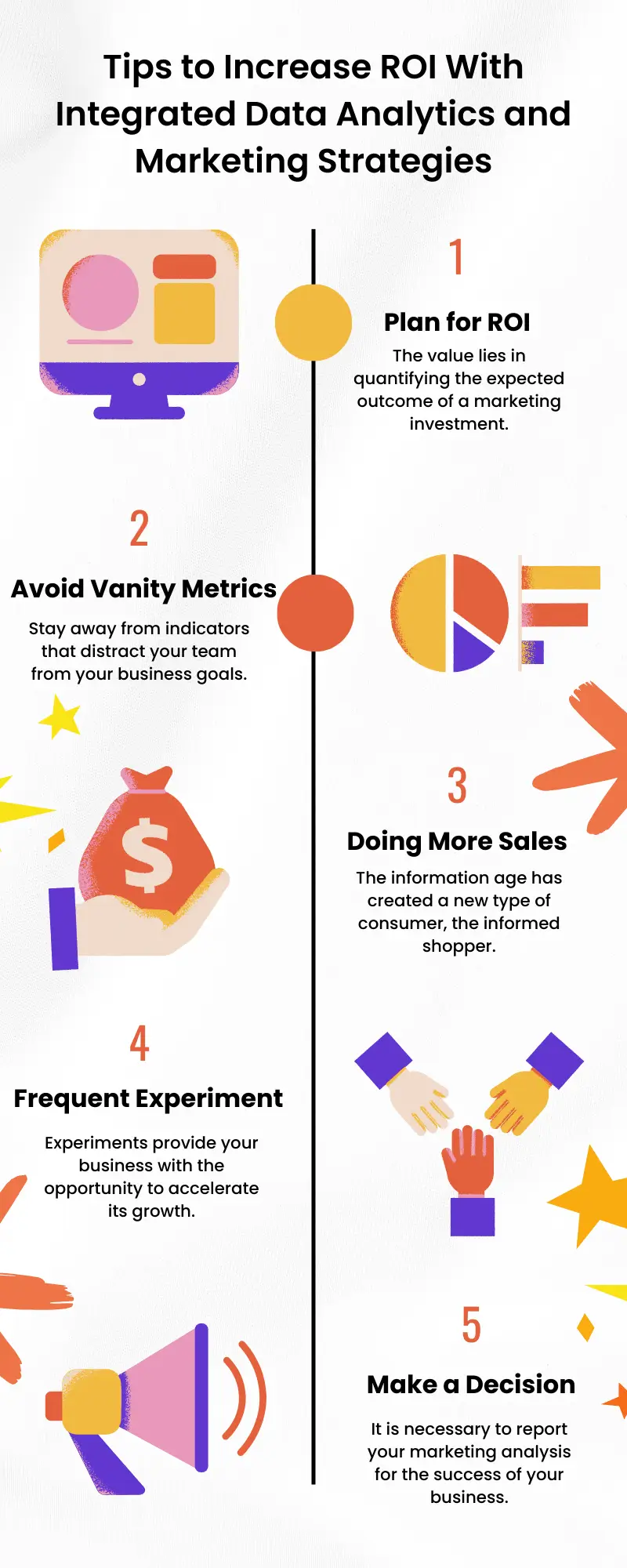The marketing industry is undergoing a major paradigm shift, driven by data analytics. It is no longer enough to reach consumers, but it is necessary to be able to reach them with the right message at the right time so that they pay attention. The goal of this post is to provide a comprehensive overview of the key components of integrated data analytics and how they can be used in your business marketing strategy to optimize return on investment.
Overview of Integrated Data Analytics
Data analytics is a process of analyzing data to make decisions, identify patterns and trends, and predict future outcomes. It is also used to measure performance in all aspects of your business.
The goal of data integration is to combine multiple sources of information into a unified repository so that it can be accessed through a single system. This allows you to combine disparate sources, such as email campaigns, with online advertising platforms such as Google Ads or Facebook Ads so you can track how these efforts work together to achieve your goals, such as increasing sales revenue or reducing the customer churn rate (the rate at which customers stop buying from us).

For this type of integration between systems to occur successfully, there must be high levels of trust between them; Otherwise, companies face challenges such as: inconsistent reporting structures between different departments within an organization; difficulty identifying nonexistent relationships between data sets due to lack of clear separation between domains (e.g., marketing vs. finance); lack of transparency when sharing information externally with partners outside your organization who could greatly benefit from access to your data; and a tendency for slide teams to rely on their own internal tools to measure the effectiveness of their efforts, which can lead to poor collaboration between them.
Significance of Integrated Data Analytics and Marketing Strategies
ROI is a key performance indicator (KPI) that measures the financial impact of marketing activities. It’s also one of the most important metrics to consider when developing your marketing strategy.
ROI can be calculated in two ways:
Incremental ROI
Calculate the incremental revenue, cost and profit contribution of each activity you have implemented on baseline or historical data. This approach can help you identify which strategies work and which don’t, so you can improve them or eliminate them altogether.
Ultimate or overall return on investment
Use this method to evaluate how well an entire campaign performed relative to its cost by measuring the total sales versus costs associated with promoting that product or service over its life cycle (i.e., from initial investment to post). -launch).
Key Components of Integrated Data Analytics
Integrated data analytics services are the combination of data from multiple sources to create a holistic view of how customers interact with your brand. It is important to ensure that all relevant customer information is integrated into a centralized repository so that you can better understand how they behave, their preferences and interests, and their purchasing behavior.
Data governance: The foundation of integrated data analytics is a strong data governance program that defines data ownership, usage policies, and security standards.
Data integration: The next step is to integrate data from disparate sources into a single, unified data repository. This can be a complex and challenging process, but it is essential for making sense of the vast amounts of data that businesses collect.
Data cleansing: Once the data is integrated, it must be cleansed to remove errors and inconsistencies. This is important for ensuring the accuracy and reliability of analytics results.
Data modeling: The next step is to create data models that represent the relationships between different data elements. This makes it easier to understand the data and to ask meaningful questions about it.
Data mining: Data mining techniques can be used to discover patterns and trends in the data. This information can be used to make better decisions about business operations.
Business intelligence: Business intelligence (BI) tools can be used to create reports and dashboards that provide insights into the data. This information can be used to make better decisions about business operations.
Predictive analytics: Predictive analytics tools can be used to forecast future events and trends. This information can be used to make better decisions about business strategy.
Prescriptive analytics: Prescriptive analytics tools can be used to recommend specific actions that businesses should take. This information can be used to improve business performance.
Security: Data analytics is only as valuable as the data it is based on. Therefore, it is essential to protect data from unauthorized access, use, or disclosure.
Compliance: Businesses must comply with a variety of data privacy and security regulations. Data analytics solutions must be designed to meet these compliance requirements.
Governance: A strong governance framework is essential for ensuring the ethical and responsible use of data analytics. This framework should define the roles and responsibilities of data stakeholders, as well as the processes for managing data risks.
Culture: A data-driven culture is essential for realizing the full potential of data analytics. This culture should promote a shared understanding of the value of data, as well as a commitment to using data to make better decisions.
Technology: The right technology is essential for supporting data analytics initiatives. This technology should be scalable, reliable, and secure.
People: Data analytics is a team sport. It requires a diverse team of people with the skills and expertise to collect, manage, analyze, and interpret data.
Processes: Data analytics is a process, not a one-time event. It requires a repeatable and scalable process for gathering, cleaning, analyzing, and reporting data.
Integrated data analytics also requires maintaining high standards of data quality and accuracy so that you can extract meaningful insights from your analysis. Poorly cleaned or unstructured data will lead to misleading conclusions and inaccurate predictions about future trends based on past performance. Maintaining high levels of accuracy requires continued investment in technology solutions such as machine learning (ML) algorithms, which are specifically designed to clean up messy data sets without sacrificing accuracy during analysis processes such as predictive modeling or future trend forecasting. based on historical patterns observed over time. .
Role of Data Integration in Marketing Strategies
Data integration is a key component of marketing strategies. It refers to the process by which data from multiple sources are combined into a single, unified data store and made available for analysis and reporting. This helps streamline processes and improve efficiency across your organization’s marketing activities, including:
Campaign planning
When all of your customer data is stored in one place, it’s easier to see how different channels are performing together across multiple campaigns or programs. That way you can make better decisions about how best to allocate resources among them based on their relative performance (or lack thereof).
Analysis
Having all relevant information in one place also makes it easier for analysts and other stakeholders who need access as part of their job functions such as when they’re creating reports or making recommendations to pull up whatever subset they need without having any difficulty finding it because there aren’t too many places where each piece might be located separately rather than being interrelated with others nearby within one centralized system.
Importance of Data Quality and Accuracy
Data quality is the degree to which data conforms to a standard of accuracy, consistency, and relevance. It’s important because it impacts the validity of decisions made based on the data. The more accurate your customer data is, the better you can target them with relevant offers and messages that will keep them engaged with your brand.
Leveraging Customer Data for Targeted Marketing
Customer data is the lifeblood of marketing. It’s the foundation of integrated data analytics, which can be used to create targeted marketing strategies that drive sales and grow your business.
If you’re not leveraging customer data, then it’s likely that your marketing efforts could be more effective. In this section, we’ll look at how companies are using customer information to improve their ROI with integrated data analytics and targeted marketing strategies.
Incorporating Predictive Analytics for Future Insights
Predictive analytics is a process of using data to predict future outcomes. It’s used in many fields, including marketing and finance. Predictive analytics helps you improve your marketing strategy by providing insights into how customers will behave based on previous actions or behaviors.
For example, if you know that customers who buy Product A also tend to purchase Product B within three days after purchasing Product A (and vice versa), then you can use this information when creating new ads for Products A and B so that more people will buy both products at once!
Aligning Marketing Strategies with Business Goals
Once you’ve defined your marketing goals, it’s important to align them with the company’s overall business objectives. This can be done by identifying the best way to measure your success and setting clear objectives that are achievable within a reasonable timeframe.
For example, if your goal is “increase sales,” then it might be more effective for you to set smaller, more specific targets such as: “Increase sales by 20% over three months” or “Get two new customers per week.” These smaller targets will allow you to see results quicker, which will help motivate everyone involved in the project (and keep them motivated).
Real-time Analytics for Agile Decision Making
Real-time analytics is the ability to analyze data as it’s being generated. This enables you to make decisions and take actions that can improve your business in real time, rather than waiting for a weekly or monthly report.
Real-time analytics is important for agile marketing because it allows you to make more informed decisions based on data from all channels online and offline instead of just relying on one isolated source (like Google Analytics).
Measuring and Monitoring ROI Metrics
Monitoring and measuring ROI metrics is an important part of the marketing process. The goal of any campaign should be to increase sales, but it’s also important to measure how well your efforts are working. ROI (return on investment) is one way to do this by measuring how much money you’re making compared with what you spent on the campaign.
It’s not just about getting more customers; it’s also about keeping them loyal and happy with their experience with your brand. In other words, ROI metrics help ensure that every dollar spent on marketing will result in long-term profits for both your business and its customers and that means setting up systems that allow you to see how well these goals are being met over time so as not only improve upon existing strategies but also create new ones based off what works best!
Addressing Challenges in Implementing Integrated Strategies
If you’re thinking about implementing an integrated approach to data analytics and marketing, it’s important to understand the challenges involved. One of the biggest obstacles is time. It takes a lot of time to get everything right and make sure that your strategy aligns with business goals. You also need the right tools and people on board.
If you have an existing marketing team that isn’t familiar with using data, they may need training to fully understand how they can use analytics as part of their workflows. Additionally, if there are no existing systems in place for collecting customer information or integrating this type of data across departments (e-commerce vs customer service), then adding these capabilities will take additional effort on top of implementing new processes around how teams communicate internally about customers’ needs over time
and measure their effectiveness. Finally, if you’re not careful about planning and implementing the right strategy for your business, it’s easy to get off track quickly. Without proper alignment between departments and stakeholders, it’s easy to fall into old patterns or miss out on opportunities that could have otherwise been identified by data analytics tools like Salesforce® Einstein™ Machine Learning.

Emerging Trends in Data Analytics for Marketing Optimization
A rising trend in data analytics is the integration of AI and machine learning. While these technologies have historically been used to enhance the customer experience, they’re also being applied to optimize marketing campaigns.
AI and machine learning can help marketers by:
- Automating repetitive tasks like data scrubbing or report generation, freeing up time for more strategic projects.
- Providing insights into consumer behavior that were previously inaccessible or difficult to measure (e.g., sentiment analysis).
- Identifying new opportunities for product development based on customer preferences and behaviors over time; for example, if you find out your customers love one type of product but not another type of product within the same category, then maybe you should consider creating more products like those popular ones instead!
Conclusion
Marketing optimization is not a one-time, linear process. It’s an iterative one that requires constant change and adaptation to the ever-changing world of customer acquisition and retention. With the right tools in place, your organization can develop an integrated data analytics strategy that will help you optimize ROI by identifying opportunities for growth, increasing sales productivity and customer satisfaction levels through targeted marketing efforts and much more!





